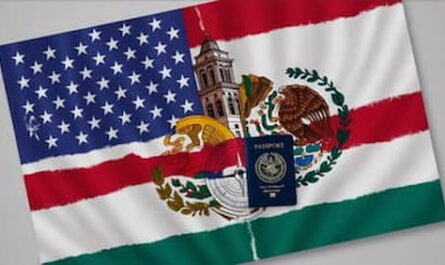The United States is among the top destinations for immigrants worldwide. Common question usually asked is how much money will I need to immigrate to the USA? The answer, unfortunately, isn’t a simple number. The cost depends on different factors. These factors include your chosen immigration path, your country of origin, your family size, or your desired lifestyle.
The total of all the individual fees needed to obtain U.S. citizenship ranges from $5,000 up to $12,000. The majority of people, however, end up spending between $7,000 and $10,000. This is a significant cost. Planning financially is a very important part of the migration process.
Meanwhile, the J-1 program is a less permanent and less expensive options to consider. You can decide after a 12-month training period if it’s for you. This period will give you a taste of the American workplace. This guide will break down the various expenses to help you estimate the financial requirements.
What is different immigration paths to immigrate to the USA?
Cost of immigrating to the USA authentically depends on your visa type. Each visa category has its own set of application fees, processing times, and potential extra expenses.
Family-Based Immigration. If you’re immigrating through a family member who is a US citizen or permanent resident, the process involves multiple steps. These steps include petitioning, background checks, and lengthy waiting periods. Costs here primarily involve application fees. Attorney fees can range significantly based on the complexity of your case and the lawyer’s rates. For example, a family of four hired Bretz & Coven, LLP in New York. They reported paying attorney fees ranging from $5,000 to $8,000 in 2023. This included assistance with family-based petitions and adjustment of status applications.
Employment-Based Immigration. To secure a job offer from a US employer is a prerequisite for most employment-based visas. This often involves recruiting costs for the employer. You will also face your own expenses for relocation. These include visa processing fees and legal assistance. For example, someone applied for an H-1B visa through the Sebastian Simon Law Group, PLLC in New York. They paid attorney fees of approximately $3,000 to $4,000 in 2023. This covered the entire process from first consultation to visa approval. Costs can be significant, particularly if you need to show financial stability to obtain a visa.
Investment-Based Immigration: This route requires investing a substantial sum of money in a US business. It involves creating jobs and meeting specific investment requirements. The lowest investment amount is high. It often reaches hundreds of thousands or millions of dollars. This makes the path only accessible to high-net-worth individuals.
Apart from visa fees, what other important expenses do I need to immigrate to the USA?
Even after securing a visa, several other expenses will arise. For example, travel costs like flights, visa application fees, and travel insurance will incur a certain cost. This cost depends on your origin and destination. Also your relocation costs can be expensive too. Moving your belongings to the USA is costly, especially if you have a large family or significant possessions. Shipping costs, customs duties, and potential storage fees usually add up quickly.
For your initial living expenses. You’ll need enough money to cover living costs for the first few months while you find employment and settle in. This includes rental or mortgage deposits, utility payments, food, transportation, medical expenses, etc. The cost of living varies depending on location – meanwhile major cities are far more expensive than smaller towns.
Immigrants often find it beneficial to consult with an immigration attorney. So, you will need to consider legal and professional fees too. Their fees can vary based on experience. Other professional fees, like those for translators or financial advisors can also arise too.
Also consider medical examinations and maybe language learning. These two are most times required for many visa types, thereby adding to the overall expense. Learning English significantly improves your chances of successful integration and employment too. This is especially true if you’re coming to the USA as a non-English speaking citizen. So bear in mind course fees vary, depending on your chosen method.
What is the estimated costs of immigrating to the USA?
So, you’re looking at applying to USCIS (United States Citizenship and Immigration Services)? Applying to USCIS entails several associated fees. The cost of filing varies based on the specific application form for residency. Generally, obtaining non-immigrant status is less complex than pursuing an immigrant petition.
Let’s talk fees. It can get a little pricey, depending on what you’re applying for.
Application Fees: The cost varies wildly depending on the form. Think $300-$600 for most petitions – it’s not a fixed amount. Non-immigrant stuff is usually cheaper than going for permanent residency.
Legal Help: You don’t need a lawyer, but they can really help, especially with the ever-changing immigration laws. Expect to pay $3,000-$4,000 for an H-1B visa (that’s the visa for specialized jobs). If you’re dealing with deportation, that number can easily jump to $10,000. Family-based petitions are usually in the $800-$1,500 range.
Medical Stuff: Before you can immigrate, you’ll need a medical exam and some vaccinations (measles, rubella, polio, etc.). Budget around $1,000 for all that.
Citizenship Test Preparation: Want to prepare for your citizenship test? Lots of places offer classes, some free, some paid. Do a due diligent research to find what works best! You can check the USCIS website for a directory of places to check out.
Becoming a Citizen: Once you’re a permanent resident, you can apply for citizenship. The naturalization fee is usually around $640-$725, plus $85 for biometrics (fingerprinting, etc.), unless you’re under 14 or over 70.
To estimate your total immigration costs, carefully consider each expense listed above. Research the costs linked to your specific visa category, or your family size, and your planned location within the USA. You can start by researching average costs for rent, utilities, and transportation in your target area. Factor in for unforeseen expenses too – immigration processes gets unpredictable sometimes. Many online resources and financial advisors specializing in immigration can provide more tailored guidance.
For further details on legal advice websites, check out this post on: Best legal advice websites for U.S. immigration queries
How can I plan for the future after immigrating to USA?
After your successful migration to the USA, you’re obligated to financially plan. Start by saving diligently, tracking your expenses, and developing a realistic budget. This careful planning will reduce stress and increase your chances of a smoother staying.
We recommend exploring various temporary opportunities. A widely favored option is the F-1 visa. It facilitates a longer stay in the United States. This visa enables you to study and engage in a paid internship for a period of up to two years.
Remember, the financial commitment is only one aspect of the immigration journey. Conduct thorough research. Ensure proper preparation. Maintain a flexible attitude. These steps will greatly improve your prospects of a successful transition to the United States.
Note: This information is for general knowledge only. It is not financial or legal advice. It is important to conduct thorough independent research. We don’t offer immigration or legal services. Individuals should consult with qualified professionals for personalized guidance.



